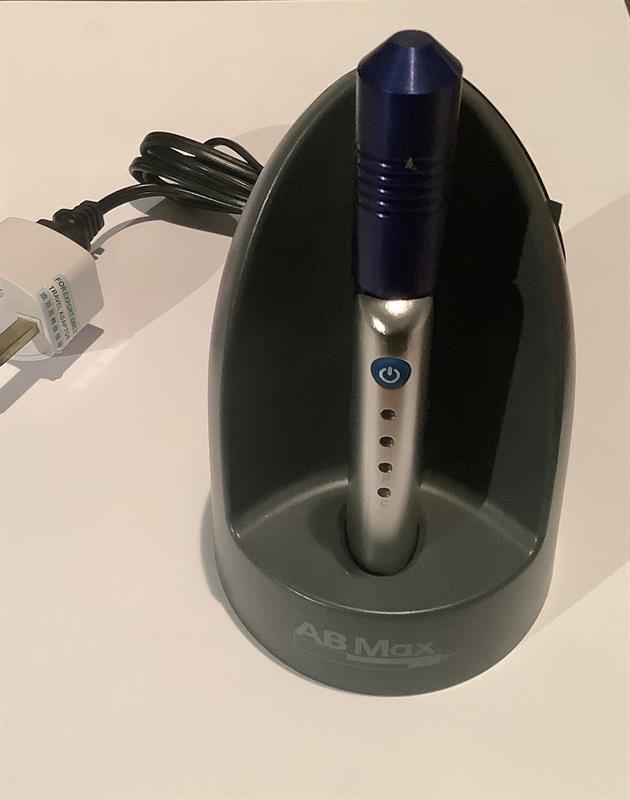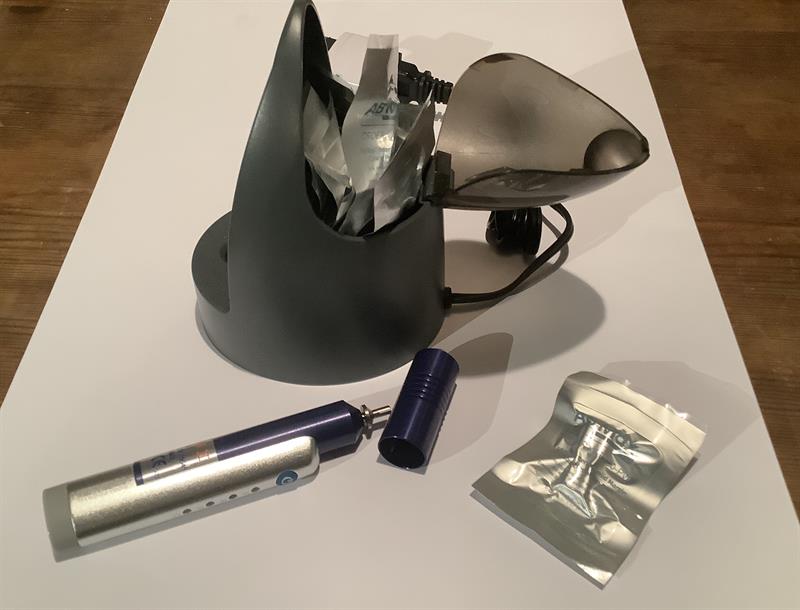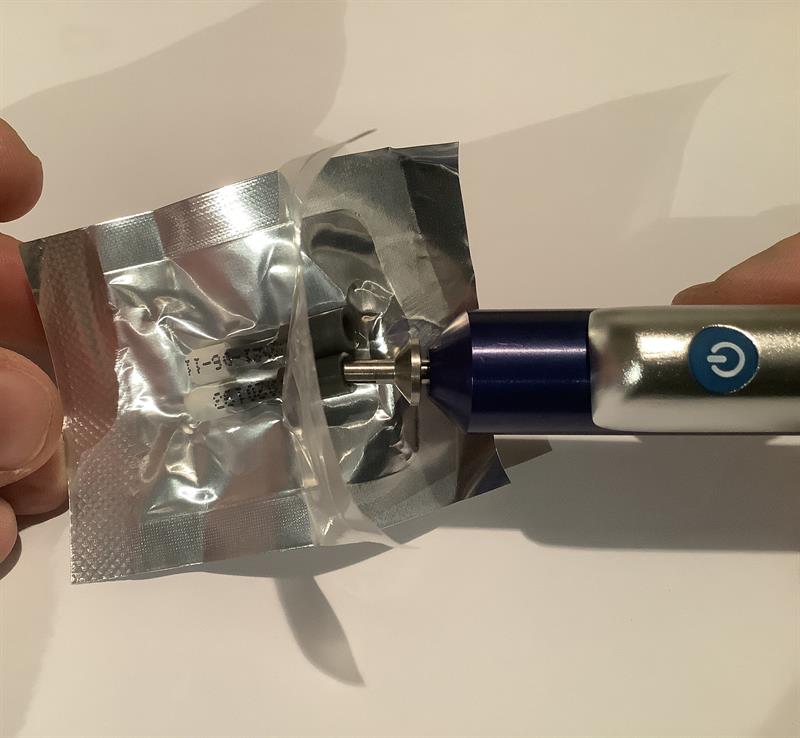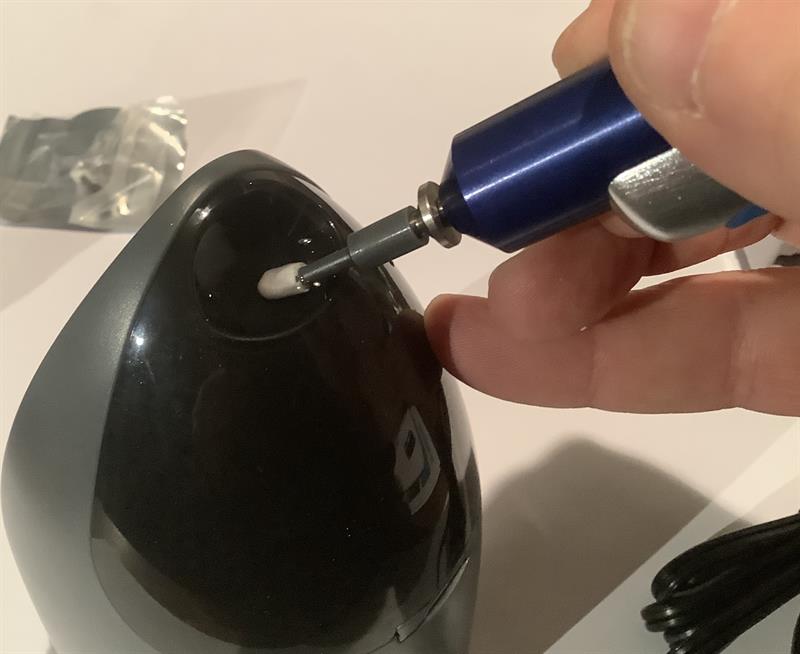Debridement of the lid margin is one of the management options for anterior blepharitis that is included in the TFOS DEWS2.1 Of the few studies cited, all seem to result in symptom alleviation, though ‘larger studies and additional study designs are needed to confirm the mechanisms of action to explain the positive results reported to date’.
One of the primary mechanisms driving obstruction of the meibomian glands (MGs) is hyperkeratinisation of the eyelid margin and duct orifices.2 As keratinised material is built up around and within the orifice, the gland is obstructed and meibum cannot be delivered from the gland to the tear film. It is believed that debridement works by mechanically removing accumulated debris and keratinised cells from the eyelid margin to allow increased flow of meibum into the tear film.
Debridement of the line of Marx (LOM), which marks the mucocutaneous junction and the keratinised lid margin, was first reported by Korb in 2013.3 He employed debridement with a spad (metal implement) and found scaling of the LOM and lower lid margin provided statistically significant symptom relief and improvement in the MG function. He concluded that debridement ‘should be considered in the management of MGD and evaporative dry eye’. Further studies have since found similar symptomatic improvement.4
The introduction of the BlephEx instrument has since offered a controlled, electronic alternative to manual spad scraping and has become part of the armoury of practitioners involved in dry eye management.5 Such a technique is indicated in cases of persistent anterior blepharitis, where lid debris from an ever-developing lid surface biofilm is suspected of inhibiting normal MG function.
The AB Max
I have recently taken delivery of a new device designed for the ‘exfoliation and debridement of the anterior eyelid margins’. The AB Max (figure 1) is similar in appearance to an electric toothbrush. The handpiece has four LEDs, the bottom one glowing red when the unit is charged. The charger unit has a pocket for the tips needed (figure 2) and a small well at the top which, after sterilisation with an anti-bacterial wipe, can be filled with lid cleansing solution of your choice.

Figure 1

Figure 2
For use on a patient, a sterile tip is attached to the head (figure 3) and this is then soaked in the cleansing solution (figure 4). It is recommended to use a drop of topical anaesthetic in each eye of the patient to be treated. At the time of writing, I have only used the unit on myself (I know!), and can confirm that, even without anaesthetic, the main sensation is that of being tickled.

Figure 3

Figure 4
The unit has three cleaning settings, each indicated by a coloured LED. To begin with, the F function (green light) is selected and the tip is applied to the lid margin, which has been carefully exposed, and scrubbing commenced from nasal to temporal canthus. This should take around 20 to 30 seconds. Next, the R function (yellow LED) is selected and scrubbing continues in the reveres direction. Finally, the P or pulsed function (blue LED) is selected and the temporal to nasal scrub action repeated. The whole process takes no more than two minutes, and the result should be a removal of any surface debris on the lid margin.
The treatment is quick and simple, patient-friendly, and I will show some results in a future feature.
• For further information, see; www.graftonoptical.com/deabmaxsk
References
- TFOS DEWS2. Free download from www.tfosdewsreport.org.
- Knop E et al. The international workshop on meibomian gland dysfunction: report of the subcommittee on anatomy, physiology, and pathophysiology of the meibomian gland. Invest Ophthalmol Vis Sci 2011;52(4):1938–1978.
- Korb DR, Blackie CA. Debridement-scaling: a new procedure that increases Meibomian gland function and reduces dry eye symptoms. Cornea 2013;32(12):1554–1557.
- Ngo W, Caffery B, Srinivasan S, Jones LW. Effect of Lid Debridement-Scaling in Sjögren Syndrome Dry Eye. Optom Vis Sci 2015;92(9):e316–e320.
- Farrant S. Dry eye 2 – mixed dry eye. Optician, 10 May 2019, pp33 to 35.
